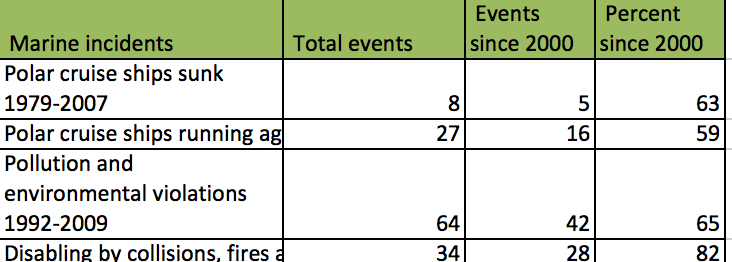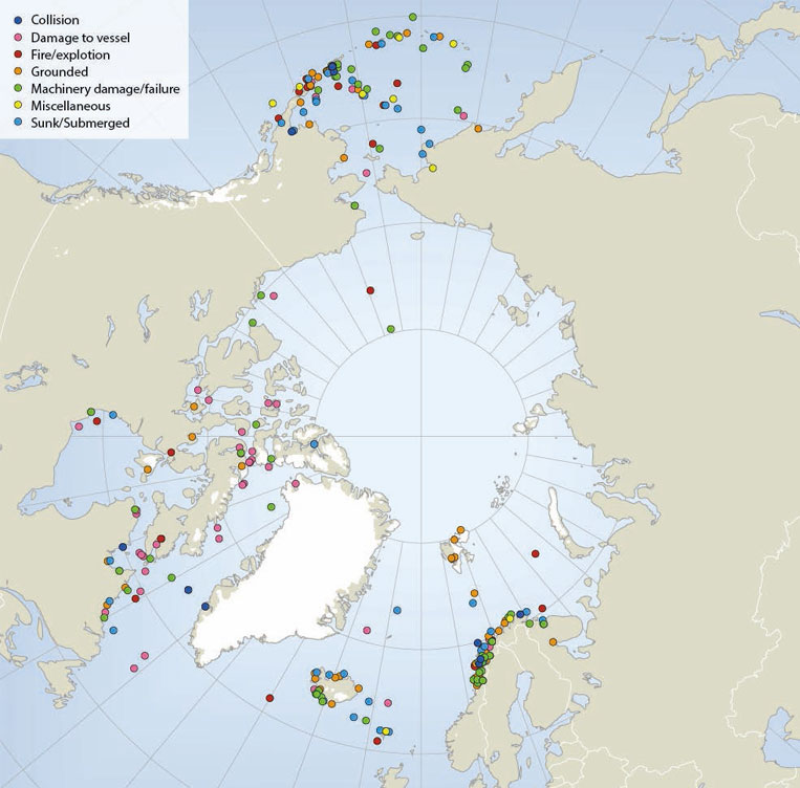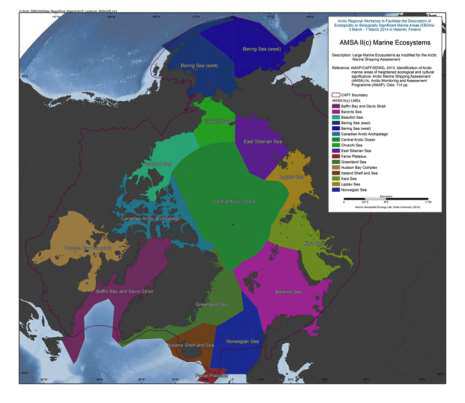shipping
Type of resources
Available actions
Keywords
Contact for the resource
Provided by
Years
Representation types
Update frequencies
status
Scale
-

Human activity is expanding in the Arctic marine environment, in part due to warming ocean temperatures and the dramatic loss of summer sea ice. New and expanding human uses include fishing, shipping and offshore oil and gas development. All have the potential to place major additional stress on ocean ecosystems which are already undergoing profound change related to warming, sea ice loss, and alterations in ocean chemistry. Because activities conducted in one nation's waters can affect other parts of the region, effective management of some human uses in the Arctic marine environment will require international cooperation. The United Nations Convention on the Law of the Sea, in conjunction with other international agreements and national laws and regulations, provides a general legal foundation. However, new rules may be necessary to protect the Arctic marine environment. Examples of possible areas of international cooperation include: development of new standards for Arctic marine shipping, regulation of new or expanding Arctic fisheries, rules to protect the environment in the course of natural resource development, stricter regulation of Arctic tourism, mechanisms to assess and manage the cumulative impacts of multiple activities affecting the same ecosystems, and procedures for the establishment of representative networks of protected marine areas. Ecosystem-based management has the potential to provide an organizing framework for these new or enhanced management measures in the Arctic. Such an approach, as generally accepted at the international level, includes defining portions of ocean space for management purposes based on oceanographic and ecological criteria, and the development of management arrangements that address all human uses of that space in an integrated fashion. A central element of ecosystem-based management is the identification of ecologically significant or vulnerable areas that should be considered for protection due to their role in maintaining valued ecosystem functions and resilience. This data was created with the purpose to identify these areas within the Arctic marine environment.
-

Arctic Biodiversity Assessment (ABA) 2013. Table 18.1. Marine incidents involving cruise ships in Arctic and Antarctic waters (the same vessels often alternate polar region according to season) (aggregated from reports from national coast guards, admiralty courts and insurers, and www.cruisejunkie.com).
-

Locations of sub-Arctic and Arctic shipping accidents and incident causes, 1995-2004 (source: Arctic Marine Shipping Assessment 2009). Published in the Arctic Biodiversity Assessment (ABA) released in 2014.
-

The Arctic Council’s 2009 Arctic Marine Shipping Assessment (AMSA) identified a number of recommendations to guide future action by the Arctic Council, Arctic States and others on current and future Arctic marine activity. Recommendation II C under the theme Protecting Arctic People and the Environment recommended: “That the Arctic states should identify areas of heightened ecological and cultural significance in light of changing climate conditions and increasing multiple marine use and, where appropriate, should encourage implementation of measures to protect these areas from the impacts of Arctic marine shipping, in coordination with all stakeholders and consistent with international law.” As a follow-up to the AMSA, the Arctic Council’s Arctic Monitoring and Assessment Programme (AMAP) and Conservation of Arctic Flora and Fauna (CAFF) working groups undertook to identify areas of heightened ecological significance, and the Sustainable Development Working Group (SDWG) undertook to identify areas of heightened cultural significance. The work to identify areas of heightened ecological significance builds on work conducted during the preparation of the AMAP (2007) Arctic Oil and Gas Assessment. Although it was initially intended that the identification of areas of heightened ecological and cultural significance would be addressed in a similar fashion, this proved difficult. The information available on areas of heightened cultural significance was inconsistent across the Arctic and contained gaps in data quality and coverage which could not be addressed within the framework of this assessment. The areas of heightened cultural significance are therefore addressed within a separate section of the report (Part B) and are not integrated with the information on areas of heightened ecological significance (Part A). In addition, Part B should be seen as instructive in that it illustrates where additional data collection and integration efforts are required, and therefore helps inform future efforts on identification of areas of heightened cultural significance. The results of this work provide the scientific basis for consideration of protective measures by Arctic states in accordance with AMSA recommendation IIc, including the need for specially designated Arctic marine areas as follow-up to AMSA recommendation IId. Reference: AMAP/CAFF/SDWG, 2013. Identification of Arctic marine areas of heightened ecological and cultural significance: Arctic Marine Shipping Assessment (AMSA) IIc. Arctic Monitoring and Assessment Programme (AMAP), Oslo. 114 pp. Data avaiable from: source: <a href="http://www.amap.no/documents/doc/Identification-of-Arctic-marine-areas-of-heightened-ecological-and-cultural-significance-Arctic-Marine-Shipping-Assessment-AMSA-IIc/869" target="_blank">Identification of Arctic marine areas of heightened ecological and cultural significance</a>
 CAFF - Arctic Biodiversity Data Service (ABDS)
CAFF - Arctic Biodiversity Data Service (ABDS)